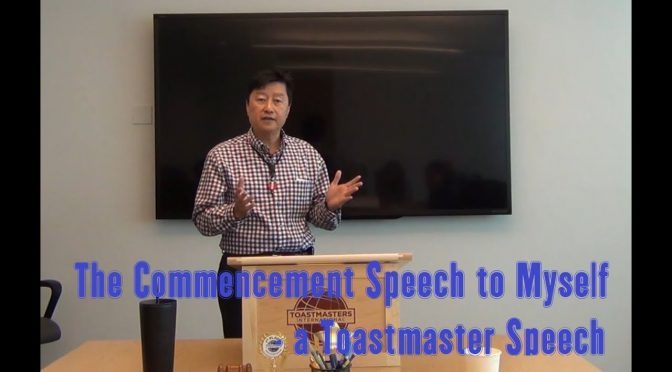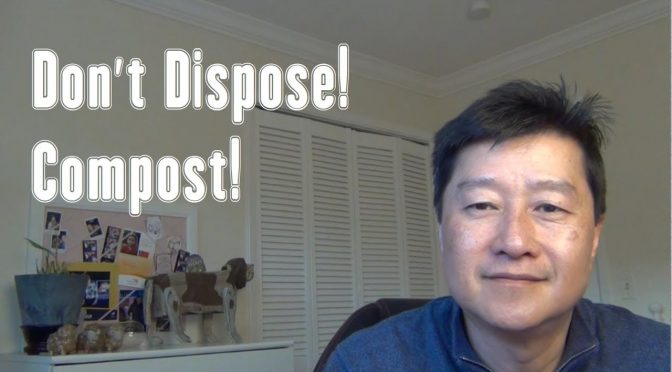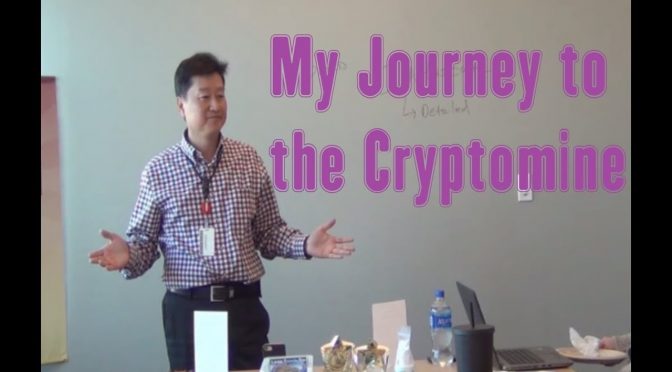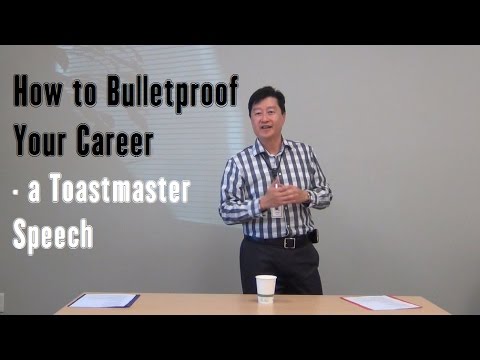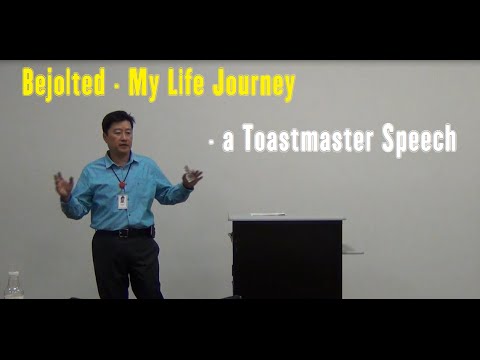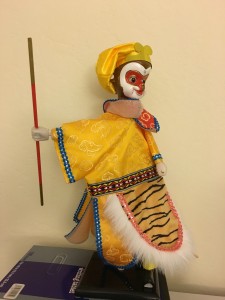I gave this speech at my Toastmasters Club. These are advises I would give to myself knowing what I know today – the “Back to the Future” scenario.
Category Archives: Personal
Don’t Dispose! Compost! – a Toastmaster Speech
I’m very fortunate working in Milpitas, where a large landfill is located. Every day when I walk outside of this building, I’m reminded of the Milpitas Smell and the environmental hazard right under our nose. Some days more than the others. In the US, we generate 4.4 lbs of garbage per person per day. Japan has only 2 lbs. In addition to the environmental impact which we often heard of, there are economic impacts –expensive garbage utility bill and the burden of recycling fees, future cleanup fee. Some are hidden, some are outright costs.
Today, I want to make a case for everyone to do his/her part in reducing the garbage generation. The often-mentioned method is to reduce, reuse, and recycle. A large part of our garbage comes from our food or kitchen waste. My focus today is about composting your kitchen wastes. And I will introduce you to my favorite method.
There are several composting methods that I’m aware of and being practiced: traditional, vermicomposting, Bokashi composting, and natural way of dig and bury. My criteria for selecting the composting method are: Ease of setup, maintenance, and post- process, compost material, smell factor, and duration.
The traditional composting is basically pile one layer “brown”/carbon material (like dry leaves, paper) upon one layer of “green” material (like grass, vegetables with nitrogen). To compost, the aerobic bacteria are to consume the material, a process there needs to have a critical mass, roughly a cubic yard or 3’x3’x3’ to get started. This is not practical for city dwellers like most of us. I have tried to do this a couple of times but ended up with a smelly pile and had to abandon it after protests from my family and neighbors and it requires turning of the pile regularly. It’s good for industrial/commercial operation, not for small daily kitchen waste.
The next method is deploying the earthly soldiers to digest the kitchen waste: worms, which for some people, hearing the word is already repulsive, not even to turn them into “pets.” My early effort in vermicomposting resulted in a major migration of the red wigglers. Not pretty if your best kitchen wastes aren’t good enough for the earth’s “guts.” They rather die drying up on the cement floor than to put up with the “feast” you put in front of them. I did have some success later on and managed to maintain two large bins of worms for over two years. But they’re picky eaters, no protein nor meat. I set them free on my yard last year.
The dig-and-bury method is digging a trench around the drip line or garden bed and continue to bury the kitchen waste daily. Not my favorite way because of the daily work and the trip hazard.
I will focus on the Bokashi method which I have been practicing for the last 5 years.
Bokashi means “fermented organic matter,” translated from Japanese. It was discovered by Dr. Teuro Higa in Japan. By fermenting or pickling your kitchen wastes including meat, fish or almost all your organic matters, you avoid the ugly parts of common composting: smells and bugs from decomposing matters and maintenance work of turning the piles. But there is some work of burying the finished Bokashi at the end, which I do every 3 months or so.
To get started, you would need three things: 1) 3x to 5x 5-gal buckets and lids – your pickling jars – the more you’ve got the less frequently you’d need to bury the contents but more spaces you’d need, 2) a small kitchen pale to collect the daily kitchen waste and 3) the Bokashi brans, which is the “magic” ingredient/ inoculator to pickle. You can buy the Bokashi brans for $12 on Amazon, which would last you about 2~ 4 months. After the initial $25 fixed costs of the buckets and pale, the on-going cost is the Bokashi brans for $1/week. You can drop it down to a quarter/week if you make your own bran like I do. For us gardeners, we spent more than that on fertilizer or soil.
The 5-gal bucket need have some newspaper or card boards sprinkled with some Bokashi bran to keep the fluid from accumulating in the bottom. Daily or every other day, you would dump your kitchen waste into the bucket and sprinkle some Bokashi bran over it, then use a round dish plate push it in and cover it up with the plate and the bucket lid without snapping it. When it’s full, snap on the lid until you’re free to bury it. I usually accumulate 5 buckets, so I don’t need to bury them too often due to my laziness.
Just dig holes just outside the drip line of your trees or bare garden bed or raised bed, dump the contents, cover it with 4~6” of soil to avoid critters or your pets from digging it up. The bacteria or earth worms will consume the entire contents within a few months and turn them into rich organic fertilizer. It’s easy, rewarding and good for the environment. I hope you all can give it a try.
My Journey to the Cryptomine – A Toastmaster Speech
Last August I gave a Toastmaster speech on bitcoin, which stood at ~$2,700/bitcoin. It went all the way to almost $20K but today is ~$11,000/bitcoin. With that kind of swing, there’s lots of money to be made or lost. There are many ways to profit OR sustain loss from cryptocurrencies. You can buy the bitcoins or other cryptocurrencies outright and cash out when it fetches a high price – buy low, sell high. But I never believe in the get-rich quick scheme, probably because of my past record of painful experiences.
One of the “sure” ways to make money from cryptocurrencies is to mine the coins. What does it mean to mine crypto currency? The mining process is a way to earn the coin without paying for it directly.
Before we go any further, let me back off a bit and give you a bitcoin primer. The methodology applies to other cryptocurrencies. All transactions are recorded in blocks. Each block is like a page of ledger books consists of ~2000 transactions. They are chained together like the binding of a ledger book, hence the name blockchain. This is so no one can insert a “fake” block/ledger page into the book to double-spend or spend more than they have. To promote decentralization, validation or clearance of a block is performed by miners as contests to win a pot of 12 ½ bitcoins plus fees. Bingo! When first one who create a 256-bit hash/checksum that meets a certain format, usually number of leading 0’s, wins the entire pot. Then on to the next block. The difficulty of the game readjust automatically so that each block takes about 10 minutes. The reward got halved every 4 years or so.
How do the miners earn the coin? By doing the hard work or making the computers doing the work of validating the ledgers of each block of transactions once every 10 mins for bitcoin or shorter time for the altcoins. The miners’ job is to bundle all transactions into a block or a page of ledger and perform the “Proof of Work” by trying and retrying to come up with a hash code that meet a certain format: at least some number of leading zeros. In return, the first person or team/pool who comes up with the correct format shout “Bingo” or some other words get 12.5 bitcoins today plus all the transaction fees within the block. The same process goes on every 10 minutes 24×7 nonstop. This is a case for bitcoin. The other coins usually have a similar process.
I decided to try mining over the Christmas holidays because I was bored. But first, I need to decide which crypto coin I want to mine. I looked around and tried to determine which coin provides the highest return with minimal investment. Bitcoin was out of question because in order to be profitable, the equipment must be able to “hash” at TH/s or billions of hashes within a second or you may be paying more in electricity to PG&E than the reward you’re getting. The special equipment costs around $6K, too much upfront cost for my taste.
I finally decided on mining Ethereum, which would require buying a graphic card or GPU, which cost ~$400 for a popular AMD model. They were very difficult to find online or retail shops. Half of the aisle of the GPU cards were empty as of last weekend I checked. Then I bought some special extension cable to bring the GPU card outside of my home PC to supply separate power (another $50). Next, I decided on which pool to join. For Ethereum, the choice was easy. I picked the biggest. The pool aggregates all the miners’ results and winnings and share the profit the entire pool earns. If you go solo, you may be mining for years before getting the pot of money for the black statistically. I followed the directions and downloaded the software the pool requires and ran it. Tried running another recommended software still got the same bad result until I heard on the net about a firmware tweak on the GPU. Flashing the firmware could potentially risk bricking the GPU card. I hesitated and decided to take the bite. I scouted the internet for tips of what memory and CPU timing to tweak to maximize the “hash” rate. Evidently, someone has tried and probably bricked a few GPUs along the way. I tried it and got lucky; I boosted the GPU performance by 25%. Now I was ready for prime time. Let’s get the dough rolling.
For several days, I watched and observed the payout slowly creeping up. After 4 days, I was earning about $13, then the crypto market had a correction and dropped the earning down to $10 or roughly $2.50/day. Taking the electricity cost into account, I was earning roughly $1.50/day. It would take me 300 days to earn back my gear. I could scale up to more GPUs, right? I couldn’t find the same GPU for $400 anymore. It’s now $520 on eBay if I could find it.
I have tried mining one other altcoin, the payout was even worse. Like the gold rush, the winning party may end up being the one providing the shovel: GPU vendors and ASIC chip vendors.
The good news is that I can now sell the GPU on eBay and even make $100 back. But more importantly, I no longer have to hear the loud fan noise in my den. Ah! A peace of mind of no mine!
How to Bulletproof Your Career – a Toastmaster Speech
My Toastmaster Speech: “How to Bulletproof Your Career”
Here’s my rehearsal of the same speech – a bit longer and complete without the timing restriction:
Bejolted – My Life Journey
I recently joined the Toastmaster Club at my work. Finally gathered enough courage to give my first speech today. The evaluation was done by Scott Yam, a colleague and fellow toastmaster club member. Looking forward to get more practices under my belt.
Happy Chinese New Year – The Year of Monkey
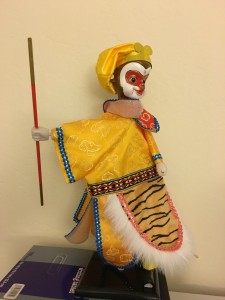
Today, February 8, 2016 is the Chinese New Year or the Lunar New Year. I want to wish you all a Happy New Year!
It’s been a while since I posted my last blog entry. I have read a few more books but have been procrastinating in writing book reviews for them. Stay tuned…
For the last few weeks, I have studied many network security issues and played with a couple of open-sourced network security software as part of my effort to boost my knowledge in the new network security industry I recently joined. What a huge learning curve to refresh my understanding of the TCP/IP stack and its subtleties! I will share some of my learning in the near future.
Monkey is an animal known for its intelligence and curiosity. May your new year is filled with your continued quest for more useful knowledge and intelligence that satisfy your curiosity.
Happy New Year!
Celebrating the Independence Day and my birthday
Celebrating the Independence Day and my birthday. Got to use this whiteboard animation tool (Easy Sketch Pro 2) for the first time.

